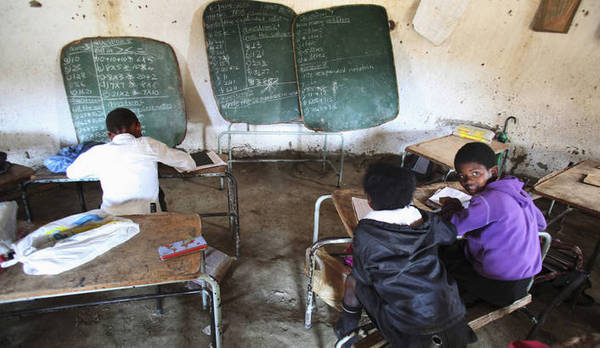
[b]1. According to the United Nations, every year of schooling in a developing country increases an individual's yearly income by 10%.[/b]
The longer kids stay in school, the more likely it is that they will be able to make an income that can sustain their family in the future. Many people in developing countries struggle to break the cycle of poverty. Many children with poor parents cannot afford school, than cannot get a good job, and often cannot send their own children to school. This is why keeping just one child in school can make a huge difference. Every child that stays in school will be able to pass on the gift of education to their future family members and break the cycle.
[b]2. Throughout the world, 57 million children are out of school. [/b]
More than 40% of the children currently out of school will never get an education. This is a population that will likely be illiterate, remain in poverty, and lack access to resources that they need to sustain themselves and their families.
[b]3. According to the Education For All Global Monitoring Report, every US dollar invested in education results in $10 worth of economic growth. [/b]
Educating children helps them specialize and gain qualifications that they can use to get jobs, start new businesses, and make a difference in the world around them that will impact not only their own life, but that of their family and community members.
[b]4. In many developing countries, public school requires that students pay tuition, uniform costs, and school supply costs, making it inaccessible for many students. [/b]
Many families cannot afford to send their children to public school, be it due to a lack of transportation, money, or school availability. Because schools do not have the funding that they need to run well, they rely on tuition to be able to pay a teacher, maintain school houses, and purchase learning materials.
[b]5. According to UNESCO, girls in sub Saharan Africa that lack any education average 6.7 births. Girls with a primary education average 5.8 births and girls with a secondary education average 3.9 births. [/b]
In countries were population growth is exacerbating the effects of poverty, educating more girls is playing a major role in slowing population growth. Girls with an education are more likely to marry later and use family planning resources.
[b]6. Children that are born to mothers with an education are twice as likely to survive past the age of 5 according to Make it Right. [/b]
Mothers with an education are aware of pre-natal care, child nutrition needs, and safety guidelines to follow when caring for children. Educated mothers are also more likely to vaccinate their children, meet medical needs, and financially afford shelter, clothing, food, and clean water for their children.
[b]7. According to the World Bank there are 800 million illiterate adults in the world.[/b]
The issue of illiteracy affects every aspect of life. Illiterate adults are at a disadvantage in understanding healthcare directions from doctors, qualifying for jobs, and passing on literacy to their children.
[b]8. According to the Education for All Global Monitoring Report, only 2% of all humanitarian aid goes to education. [/b]
Despite the strong evidence of the global need for education, not enough aid is being targeted to schools to improve the issue. There is still a great need for money to train teachers, build school houses, and buy school supplies so that more children can attend school.
[b]9. To be able to provide an education to students around the world, 18 million more teachers are needed. [/b]
There is a high demand to train more teachers in developing countries, but training and paying teachers is expensive.
[b]10. According to the World Bank, in 2012 there was a 108% increase in primary school enrollment and 73% increase in secondary school enrollment. [/b][b]
[/b] Although there is much to be done to make education accessible to all children, progress is being made and there is hope that one day all students will be able to get an education and go to school. Thanks to increased international attention to the issue and humanitarian aid from nonprofit organizations, more children can go to school and learn the skills that they need. To make a difference, learn about the [url=http://givology.com/giv-now/giv-students/]students[/url] and [url=http://givology.com/giv-now/giv-projects/]projects[/url] that Givology is supporting.